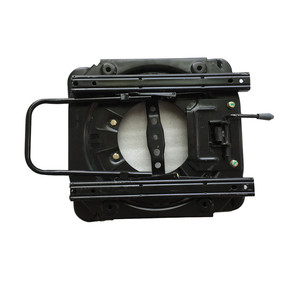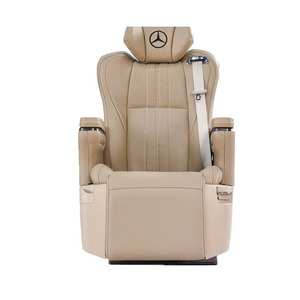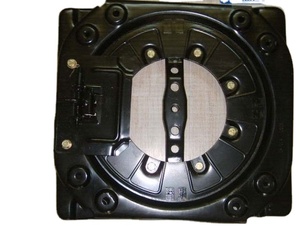(2196 products available)
















































































































































































































An auto-swivel seat is designed to assist people, especially the elderly and disabled, to get in and out of a car easily. It reduces the need to bend or stretch, minimizing the risk of pain or injury. The seat can be fitted onto a car seat or be a portable swivel seat that can be used on any chair. The auto-swivel seat also has a weight-bearing capacity, which is important when choosing the right model for a customer.
The auto-swivel seat has different types, such as:
Auto seats have different specifications depending on the model and make. However, here are some common specifications to look out for when buying an auto swivel seat.
Seat Height
The height of a swivel seat in a car is very important. It impacts how easy it is to get in and out of the vehicle, as well as overall visibility while driving. For those with mobility issues or the elderly, a seat height that allows for easy transfer to and from the seat is crucial. It minimizes strain on joints and reduces the risk of falls. Adjustable seat height can also benefit tall individuals, providing proper lumbar support and a comfortable driving experience. Besides, a swivel seat height that is too low can limit visibility of the road and surrounding obstacles. Ultimately, a well-designed swivel seat height contributes to safety and comfort for all passengers.
Seat Depth
Seat depth is an important aspect of swivel seats in cars. An adequately deep seat can provide a comfortable and supportive experience, while a seat that is too shallow or deep can lead to discomfort and potential health issues. A properly sized seat depth allows passengers to sit fully supported, with their backs against the lumbar support and their feet planted firmly on the floor. This position promotes good posture, reducing the risk of back pain and other musculoskeletal problems. Conversely, a seat that is too shallow forces occupants to sit awkwardly. On the other hand, a seat that is too deep can lead to difficulty reaching the pedals in a car, particularly for shorter individuals.
Backrest Angle
The backrest angle of a swivel seat in a car is crucial for comfort and support. A well-angled backrest can promote good posture and reduce fatigue on long drives, while an improperly angled backrest can lead to discomfort and potential health issues. An adequately angled backrest supports the natural curve of the spine, allowing passengers to sit comfortably for extended periods. This is especially important for drivers who spend much time behind the wheel. Conversely, a backrest that is too straight or too reclined can lead to strain on the back muscles, resulting in discomfort and pain over time. Besides, a well-angled backrest can enhance safety by keeping passengers properly positioned in their seats during sudden stops or accidents.
Weight Capacity
The weight capacity of a swivel seat in a car is a crucial specification that ensures safety and functionality. Each seat is designed to support a specific weight range, considering the seat's construction and the vehicle's safety features. Exceeding the recommended weight capacity can result in several issues. First and foremost, it can compromise the seat's integrity, leading to premature wear or even failure in a collision. Additionally, an overloaded seat can affect the vehicle's stability and performance, particularly in emergency situations. It is essential to consider the weight capacity when choosing a swivel seat, especially for larger individuals or those transporting additional passengers. Many seats offer features such as reinforced construction or adjustable supports to accommodate higher weight capacities.
Materials
Auto swivel seats are made of different materials. For instance, seats with leather upholstery offer a luxurious experience and are easy to clean. Fabric seats are well-ventilated but not waterproof. Some seats are made of memory foam, which molds to the body's shape to provide support and comfort.
Base Size
The base size of a swivel seat in a car is an important consideration that impacts stability, weight distribution, and overall functionality. A well-designed base can enhance the seat's performance and safety, while an improperly sized base can lead to issues. One of the key functions of the base is to provide a stable foundation for the swivel mechanism. A larger base can offer more stability, which is particularly important in a car where sudden movements or turns can cause the seat to shift. Besides, the base size can impact the seat's clearance and swivel range, affecting how easily passengers can enter and exit the vehicle. A well-sized base can facilitate smooth swivel motion, allowing for quick and easy transfer in and out of the seat.
Swivel Mechanism
The swivel mechanism of a seat is a crucial component that determines its functionality and ease of use. A well-designed swivel mechanism allows the seat to rotate smoothly and securely, enabling passengers to enter and exit the vehicle easily. Several features can enhance the swivel mechanism and contribute to a better user experience. One of the most important aspects of the swivel mechanism is its smoothness and stability. Passengers should be able to rotate the seat without effort or jerking, ensuring a comfortable and safe experience. This is particularly important for elderly individuals or those with limited mobility, as a smooth swivel can minimize strain on joints and reduce the risk of falls.
Below are some tips for maintaining the auto swivel seat.
When choosing an auto-swivel seat, it's essential to consider several factors to ensure that the selected seat meets the requirements of the intended user and the car.
Weight capacity:
The weight capacity is vital to consider when choosing the auto-swivel seat. Different seats have various weight capacities. Therefore, it is vital to choose a seat with a weight capacity that meets or exceeds the weight of the intended user.
Car compatibility:
Not all auto-swivel seats are suitable for all cars. Therefore, it is vital to choose a swivel seat that is compatible with the car's model and type. For instance, choose a seat compatible with the auto's back seat and one that is easily installed in the car.
Swivel mechanism:
There are various swivel mechanisms in the auto-swivel seats. Each mechanism is designed to provide a different level of swivel action. Therefore, it is vital to choose a seat with a swivel mechanism that offers a smooth and easy swivel action, making it easy for the user to get in and out of the car.
Seat height and depth:
The seat height and depth are important to consider when choosing an auto-swivel seat. This is because an individual may have difficulty getting in and out of a seat that is too high or too low. Therefore, it is vital to choose a swivel seat that has a suitable height and depth.
Comfort and support:
When choosing an auto-swivel seat, consider the comfort and support features. Some of the auto-swivel seats have padding and lumbar support. Such features make the seat more comfortable and supportive.
Portability:
Consider the portability of the auto-swivel seat. This is because some seats are lightweight and can be easily transported from one place to another. On the other hand, some seats are designed to be more stable and secure in the car but are heavier and more challenging to move around.
Price:
Different auto-swivel seats have varying prices depending on several factors such as size, features, and material. Therefore, it is vital to choose a seat that is affordable and meets the budget. It is also essential to compare different seats and select the one that offers the best value for money.
It is important to note that not all auto swivel seats can be installed without professional assistance. While some can be installed as a DIY project, others are complex and require a professional to install. If it's a DIY project, follow the steps below.
1. Choose a swivel seat base suitable for the vehicle and compatible with the seat.
2. Read the manufacturer’s instructions carefully to understand the installation process.
3. Remove the old seat from the vehicle. This involves removing bolts and disconnecting any electrical connections, such as heating or ventilation seats.
4. Install the swivel seat base. This includes aligning it with the mounting points and securely fastening it with bolts.
5. Attach the seat to the swivel seat base. Ensure it is securely fastened and adjust its position.
6. Reconnect any electrical connections if applicable.
7. Test the swivel seat to ensure it functions properly and make any necessary adjustments.
8. Once satisfied with the functionality, reinstall any covers or trim pieces removed during the process.
9. Take a test drive to ensure everything is working well and the seat is comfortable.
Always consult with a professional if unsure about any installation steps or swivel seat compatibility.
Q1: Who can use an auto-swivel seat?
A1: An auto-swivel seat is not specifically designed for any group of people. However, it is mainly designed for people with mobility challenges, elderly people, and caregivers. It can be used by anyone who wants to make getting in and out of the car easier.
Q2: Does an auto-swivel seat have a weight limit?
A2: Yes, an auto-swivel seat has a weight limit. The limit is normally set to ensure the safety and functionality of the seat. This information can be found on the manufacturer's specifications. It is important to adhere to the weight limit to prevent damage to the seat or injury to the user.
Q3: Can an auto-swivel seat be installed in any car?
A3: An auto-swivel seat can be installed in any car as long as the car is compatible with the seat's design and mounting requirements. This includes car models with a sufficient space and a sturdy floor where the seat can be mounted.